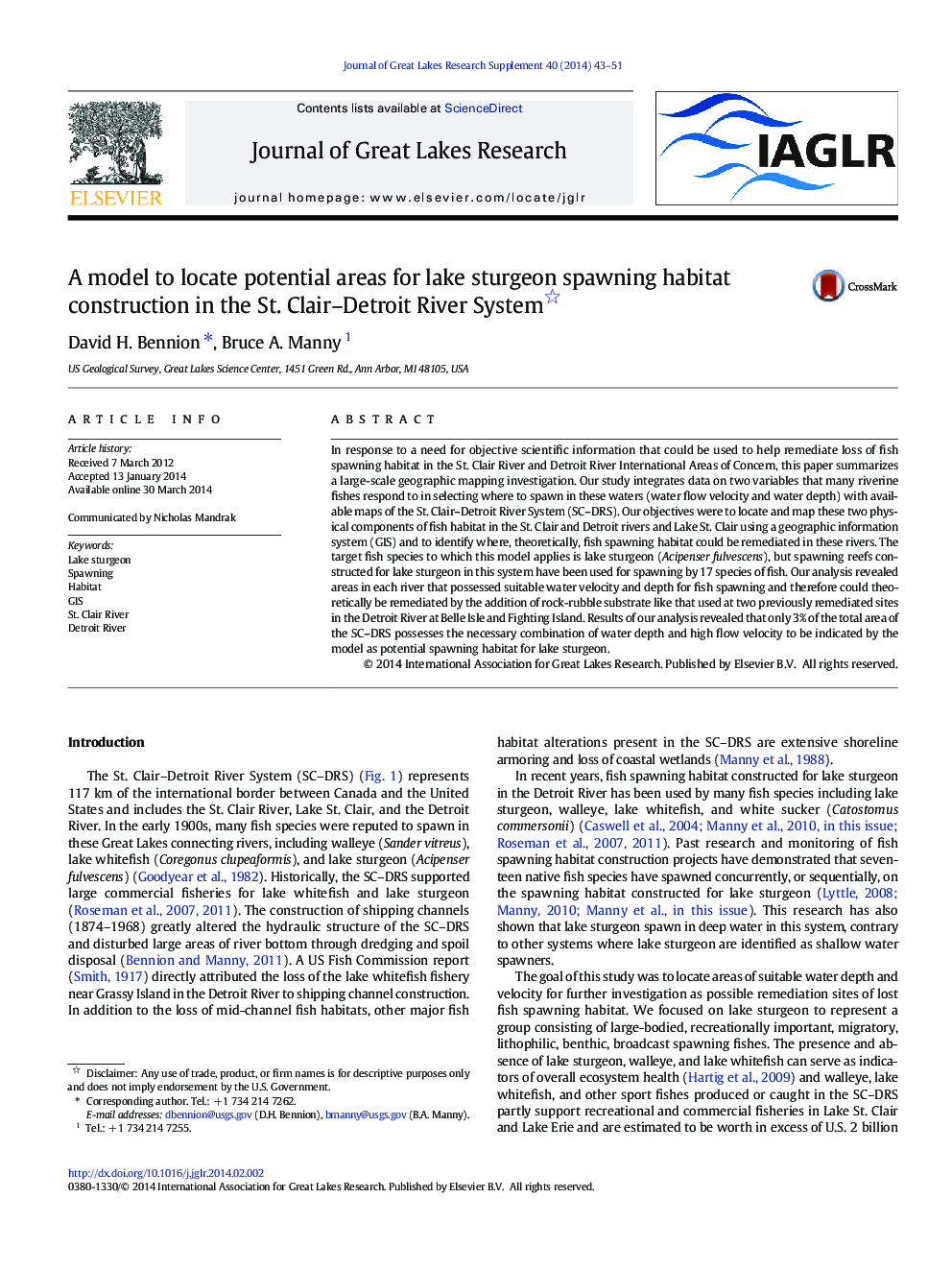| Article ID | Journal | Published Year | Pages | File Type |
|---|---|---|---|---|
| 4398425 | Journal of Great Lakes Research | 2014 | 9 Pages |
•We model potential areas for fish spawning habitat remediation.•Only 3% of the system is potentially suitable for habitat remediation.•We identify priority sites for further study.
In response to a need for objective scientific information that could be used to help remediate loss of fish spawning habitat in the St. Clair River and Detroit River International Areas of Concern, this paper summarizes a large-scale geographic mapping investigation. Our study integrates data on two variables that many riverine fishes respond to in selecting where to spawn in these waters (water flow velocity and water depth) with available maps of the St. Clair–Detroit River System (SC–DRS). Our objectives were to locate and map these two physical components of fish habitat in the St. Clair and Detroit rivers and Lake St. Clair using a geographic information system (GIS) and to identify where, theoretically, fish spawning habitat could be remediated in these rivers. The target fish species to which this model applies is lake sturgeon (Acipenser fulvescens), but spawning reefs constructed for lake sturgeon in this system have been used for spawning by 17 species of fish. Our analysis revealed areas in each river that possessed suitable water velocity and depth for fish spawning and therefore could theoretically be remediated by the addition of rock-rubble substrate like that used at two previously remediated sites in the Detroit River at Belle Isle and Fighting Island. Results of our analysis revealed that only 3% of the total area of the SC–DRS possesses the necessary combination of water depth and high flow velocity to be indicated by the model as potential spawning habitat for lake sturgeon.
